Monsoon Reads 2025: Stories That Soak, Stir, and Stay
BY MEGHA ANN MATHEW
03 July, 2025
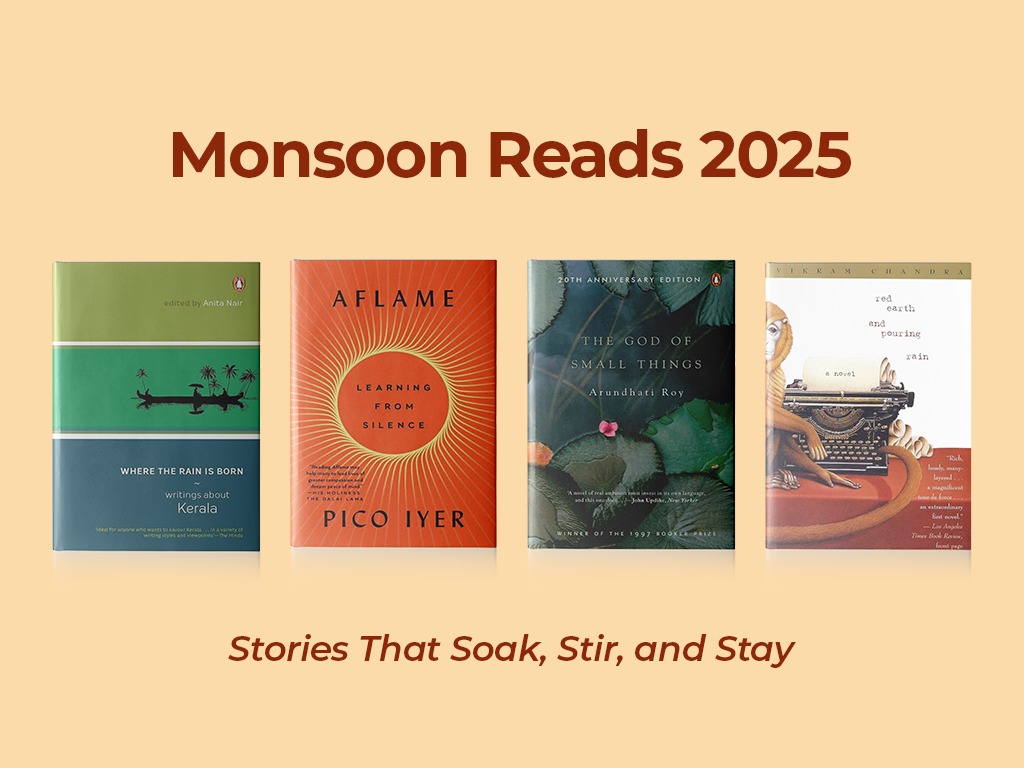
There is something about the monsoon that calls for stillness and immersion. As the sky darkens and rain lashes against windowpanes, we reach for the comfort of stories. Not just any stories, but ones that match the mood of the season: lush, lyrical, melancholy, romantic, philosophical, and sometimes even turbulent. This is the time to sink into books that echo the rain outside, books that transport us to storm-drenched villages, misty hill stations, or the inner landscapes of longing and memory.
Monsoon is not merely a season in India; it is a state of mind. It soaks the soil, yes, but also our senses. And literature, with its ability to hold silence and storm in the same sentence, becomes the perfect companion. This list of monsoon reads for 2025 isn’t just about weather. It is about mood. These books deal with rain not only as atmosphere but as metaphor, as memory, and as narrative texture. Some of them are rooted in the wet soil of Kerala or the swollen banks of the Sundarbans. Others use rain as a canvas on which complex emotional or philosophical ideas are painted. From translations of Indian literary greats to philosophical travelogues, from regional masterpieces to modern classics of global fiction, this reading list spans languages, genres, and continents. We begin with books where rain is central to the storytelling and slowly move toward titles where the rain is more internal, metaphorical, or existential.
So pour a cup of something warm, find your quiet corner, and let the rain read with you.
Where the Rain is Born: Writings About Kerala, edited by Anita Nair
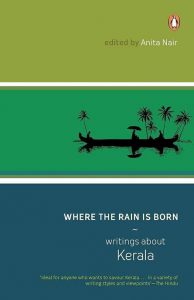
This anthology is a literary downpour in itself. Compiled and edited by Anita Nair, Where the Rain is Born gathers diverse voices who reflect on Kerala in all its rain-drenched beauty and contradictions. The monsoon, in these pages, is not just a meteorological phenomenon but a living character. Through personal essays, stories, poems, and reflections, the book brings together the sensuality of wet landscapes, the cultural rhythms of Onam, and the lyrical melancholy of rain-soaked memories.
Writers like Kamala Das, O.V. Vijayan, and M. Mukundan appear alongside newer voices, forming a multigenerational chorus that sings of rivers, coconut groves, and ancestral homes echoing with thunder. What makes the book uniquely monsoon-ready is how it explores the idea of homecoming through water. Rain, here, is a return. A reminder. A rediscovery. For Malayalis living away from Kerala, it evokes a visceral nostalgia. For others, it offers a literary map of a state where the monsoon is both rhythm and reckoning.
Each piece is short and self-contained, making it perfect for dipping in and out between rain spells. But cumulatively, they create an immersive, almost cinematic mood. This is a book not only to read but to listen to. Because in every line, there is the soft percussion of rainfall, the whisper of rivers, and the rustle of wet trees. It is the perfect companion for those who want their reading to echo the rhythm of the falling rain.
Monsoon Diary by Shoba Narayan
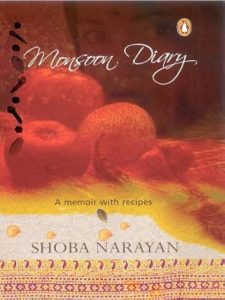
Part memoir, part cookbook, part cultural meditation, Monsoon Diary is a deliciously layered book that captures the emotional and sensory textures of growing up in South India. Shoba Narayan takes readers through the seasons of her childhood and early adulthood with a particular emphasis on the monsoon—a time when food, memory, and longing intersect most poignantly.
Each chapter is structured around a recipe, but the food is merely the frame. Within that structure, Narayan weaves stories of familial bonds, awkward adolescence, cultural identity, and the kind of nostalgia that deepens with every drop of rain. The writing is conversational yet lyrical, and there’s a lush sensuality to her descriptions of both food and landscape.
The monsoon is never merely background in this book. It is the season that stitches together smell, taste, and time. From the earthy aroma of wet turmeric leaves to the crisp sound of vadas frying while the skies pour outside, Narayan creates a multi-sensory experience. In the midst of heavy rain, childhood tensions rise, romantic possibilities spark, and homesickness surfaces.
What makes Monsoon Diary especially powerful is how it speaks to diasporic readers. It bridges the gap between the monsoon of memory and the monsoon of imagination. For anyone who has grown up with rain as ritual and food as comfort, this book will feel like a handwritten letter from home. It’s best read slowly, perhaps even aloud, preferably while something is cooking on the stove and the windows fog up with steam and stories.
Manju by M.T. Vasudevan Nair
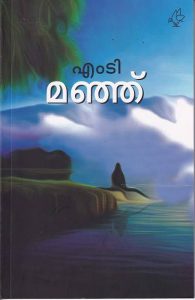
A landmark work in Malayalam literature, Manju (translated as “Mist”) is a short yet profound novel that captures the chilly, rain-laden atmosphere of Nainital and explores themes of emotional detachment, feminine solitude, and quiet rebellion. Written by Jnanpith awardee M.T. Vasudevan Nair, this novel stands out not only for its unique setting, far from the author’s native Kerala, but also for its introspective, almost minimalist style.
At the heart of the story is Vimala, a schoolteacher whose life unfolds in a foggy hill station surrounded by rain, mist, and silence. Unlike the boisterous monsoon of the south, here the rain is withdrawn, spectral, and intimate. It wraps itself around the protagonist, reflecting her inner landscape of uncertainty, longing, and restraint. There is a deep, slow melancholy in the pages of Manju, a loneliness that mirrors the season itself.
The novel doesn’t chase drama but instead lingers on unsaid words, unresolved relationships, and the sound of rain on tin roofs. It is a novel of emotional climate more than plot, and in that way, it is the perfect book for a rain-filled day. Manju is best read when you’re in no hurry, when the rain slows you down and you’re ready to sit with the gentle ache of a story that doesn’t offer answers but mirrors your own questions. In a season that invites introspection, this quiet, powerful novel offers the perfect companion to solitude.
Oru Kudayum Kunju Pengalum by Muttathu Varkey
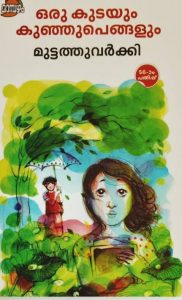
A true gem of Malayalam children’s literature, Oru Kudayum Kunju Pengalum (An Umbrella and a Few Little Girls) by Muttathu Varkey stands as a poignant testament to the purity of sibling love and the quiet heartbreaks of orphaned childhood. First published in 1961, the novel follows the deeply moving story of Baby and Lilly, two orphaned siblings who are raised by their mother’s sister under trying circumstances.
The monsoon here is not just an atmosphere, but almost a narrative catalyst. A small incident on a rainy day, where Lilly’s wealthy classmate Gracy refuses to share her umbrella, sets in motion a chain of events that separates Baby and Lilly. Angered by Gracy’s arrogance, Baby injures her, and fearing repercussions, runs away from home, promising Lilly that one day he’ll return with a beautiful umbrella with a bird-shaped handle.
What follows is a heart-rending journey through abandonment, resilience, and eventual reunion. As they grow up separately, their lives reflect the harshness of a world that is often unkind to the vulnerable. Yet the novel, with all its sorrow, is deeply hopeful, filled with moments of unexpected kindness, like the doctor’s ceaseless search for Baby and Saudamini’s protective affection.
The novel beautifully explores class differences, emotional trauma, and the power of familial love, without ever descending into melodrama. Varkey’s writing is simple and accessible, but laced with deep moral insight. The umbrella becomes more than a physical object; it symbolises reunion, healing, and fulfilled promises.
This isn’t just a monsoon read; it’s a timeless story that evokes the warmth of old Malayalam tales read aloud on rainy afternoons. Oru Kudayum Kunju Pengalum remains one of the most beloved novels in Malayalam’s children’s canon, a reminder of how even the smallest promises made in the rain can shape entire lives.
Sooryane Aninja Oru Sthree by K. R. Meera
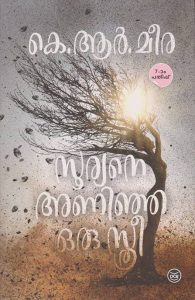
K. R. Meera’s Sooryane Aninja Oru Sthree (A Woman Who Wore the Sun) is a fiercely poetic, emotionally dense narrative that marries personal trauma with mythic strength. Meera, one of the most powerful voices in contemporary Malayalam literature, crafts this story around a woman whose life has been set ablaze, both metaphorically and literally. In the midst of her fire, however, rain appears not only as contrast but as redemption.
Set in a landscape that swings between the domestic and the cosmic, between injustice and transcendence, this novella-length work is richly layered. The protagonist’s battle is not just with society but with language itself—how it is used to define, confine, and defile women. And yet, through Meera’s radical imagination, the same language is reclaimed as a weapon of liberation.
Rain enters this story like a hush after rage. It is not passive. It is not just healing. It is reflective, steady, and symbolic. It cools the flames of injustice, offers the protagonist breath, and wraps the narrative in moments of clarity amid chaos. The poetic prose flows with the rhythm of a monsoon drizzle, quiet at first, then insistent, then all-encompassing.
This is not a gentle monsoon read—it is an urgent one. Read it when you are ready for language that challenges, for stories that blister and balm in equal measure. K. R. Meera doesn’t offer easy conclusions. But she offers something rarer: a fierce compassion, a storm of voice, and a reminder that even in devastation, a downpour can cleanse, awaken, and transform.
The Hungry Tide by Amitav Ghosh
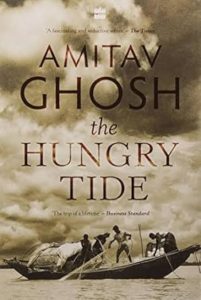
Amitav Ghosh’s The Hungry Tide is perhaps one of the most definitive monsoon novels in Indian English literature—set in the fluid, unstable, rain-drenched world of the Sundarbans, where land and water constantly trade places and where survival itself is a matter of negotiation with nature. In this richly woven narrative, the monsoon is a force. A danger. A truth.
The novel follows two central characters: Piyali Roy, a Bengali-American marine biologist researching the endangered river dolphin, and Kanai Dutt, a Delhi-based translator visiting the region after receiving a mysterious packet of documents. Through their journeys and that of the local boatman, Fokir, Ghosh explores themes of language, belonging, environmental precarity, class, and the boundaries between the scientific and the sacred.
But what makes this book such an unforgettable monsoon read is its deep immersion in the tidal rhythm of the Sundarbans. Here, rain does not soothe—it intrudes, drowns, and disorients. Ghosh’s descriptions of riverine landscapes under a storm are nothing short of poetic reportage. You can almost hear the rush of water swelling, taste the salt in the wind, and feel the terror of a cyclone rolling in. Just as tides blur land and sea, Ghosh blurs binaries—between East and West, myth and science, past and future.
The Hungry Tide is an essential pick for readers who want their monsoon reads to be immersive, thought-provoking, and morally complex. It reminds us that the rain isn’t always gentle, that it can also be the bringer of reckoning. But it also reminds us that in those storms, there is beauty, resilience, and the possibility of unexpected understanding.
Red Earth and Pouring Rain by Vikram Chandra
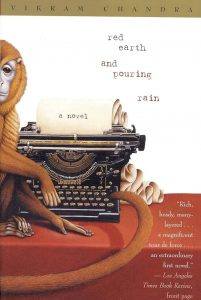
If the monsoon has a mythic dimension, then Vikram Chandra’s Red Earth and Pouring Rain is its most ambitious epic. Inspired in part by the egend of the scholar-scribe-soldier James Skinner and the classic tale of the talking monkey from Indian folklore, this debut novel is a sprawling, Postmodern marvel that folds time, history, magic, and myth into one astonishingly layered narrative.
The rain in this novel is constant, not only as a physical setting but as an emotional undercurrent. It pours through centuries, across continents, over battlefields and colonial courts, through stories of gods, revolutionaries, and exiled poets. This is the kind of book that isn’t merely read but experienced. And during the monsoon, its thunderous prose and endlessly nested narratives feel all the more atmospheric.
At the novel’s heart is a reincarnated monkey named Sanjay who, after being wounded, begins to tell stories, tales drawn from Indian epics, colonial histories, and the author’s imagination, in exchange for more days to live. The reader is taken from 18th-century India to modern-day
California, from the dry dust of war to the rain-soaked ink of storytelling itself. Chandra explores love and loyalty, language and rebellion, with a storyteller’s flair and a philosopher’s depth.
Rain here is literary and literal, it is the force that soaks manuscripts, drowns voices, fuels epics, and connects disparate eras. It becomes a symbol of continuity in chaos, the ever-returning pulse of life and imagination. The novel doesn’t shy away from challenging the reader, but the reward is profound: you emerge from it drenched in knowledge, in history, and in wonder.
One Day in the Season of Rain (Ashadh Ka Ek Din) by Mohan Rakesh
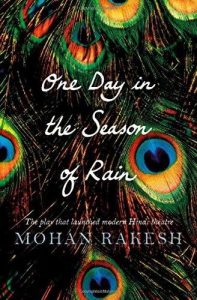
A timeless classic of modern Hindi drama, Ashadh Ka Ek Din (translated as One Day in the Season of Rain) by Mohan Rakesh is a poetic meditation on love, art, memory, and the cost of ambition. Set during the monsoon month of Ashadh, the play imagines a fictionalised account of the great Sanskrit poet Kalidasa’s life, weaving together history and imagination, desire and renunciation, much like rain itself—elusive, cyclical, and impossible to hold.
At the centre of the play is Mallika, a village girl and Kalidasa’s first muse, who chooses a life of solitude over bitterness after Kalidasa leaves her behind for fame and courtly recognition. Her love is quiet, enduring, and deeply connected to the rhythm of nature, in contrast to the urban, performative love Kalidasa experiences later. The monsoon here becomes a metaphor for passion that once nourished and then eroded, a season both lush and haunting.
Translated into English by theatre scholar Aparna Dharwadker, the text retains the lyrical beauty of the original while making its philosophical and emotional undercurrents accessible to a wider audience. Every dialogue in the play feels like a raindrop—delicate, but capable of cutting deep. There is a musicality to the silences, too, and a sharp emotional tension that simmers beneath the surface.
This is not a monsoon book in the literal sense, but few works have captured the emotional landscape of the season as evocatively. The play reminds us that the rains don’t just revive, they also remind us of what was lost, what never arrived, or what came only to pass. One Day in the Season of Rain is best read aloud, or better yet, staged in your mind. Its imagery, its restraint, and its heartbreak resonate profoundly during grey, brooding afternoons. It is a work that stays with you, not with thunder, but with the soft, persistent tap of longing.
The God of Small Things by Arundhati Roy
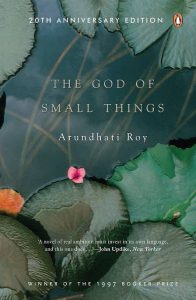
Arundhati Roy’s The God of Small Things is a monsoon-soaked classic, both literally and metaphorically. Set in the lush, rain-drenched town of Ayemenem in Kerala, the novel is infused with the sultriness, melancholy, and mystery that the monsoon brings. The story unravels like the landscape after a heavy downpour—steamy, fractured, and overrun with memory.
At the heart of the novel are Rahel and Estha, twins whose childhood is ruptured by tragedy, and whose adult lives remain tethered to the unspoken. Through their fragmented, nonlinear memories, Roy explores forbidden love, caste oppression, colonial hangovers, and familial
expectations, all amidst the ceaseless backdrop of monsoon greens and waterlogged dreams.
Rain in this novel is more than weather; it’s emotional geography. It drips through memory, floods secrets, and churns buried grief to the surface. Roy’s language, both lush and sharp, mimics the rhythm of falling rain—soothing in one moment, startling in the next. The sensory experience of the book is overwhelming: you can smell the wet earth, feel the slime of moss on stone steps, and hear the monsoon frogs and cicadas in the background of every scene. But more than atmosphere, it is the novel’s emotional cadence that matches the monsoon. The sorrow is humid andheavy. Joy, when it comes, is short-lived like a sudden clearing in the clouds. And everything, always, is on the verge of overflowing. Roy’s command of imagery and structure creates a narrative that is at once devastating and unforgettable.
If there’s a book that captures how memory, like rain, can both nourish and erode, The God of Small Things is it. It’s not an easy read, but a necessary one. During the monsoon, when emotions run high and the world seems a little more introspective, this novel offers a mirror, not to the weather, but to the storms within.
Rain in the Mountains by Ruskin Bond
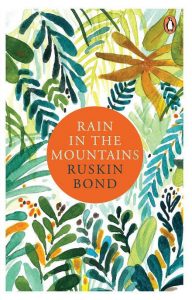
Few writers evoke the Indian monsoon and the slow magic of hill life as tenderly as Ruskin Bond. Rain in the Mountains is a collection of essays, reflections, and journal entries that capture the quiet, contemplative beauty of the author’s long relationship with the hills of Mussoorie. This book is not a novel, but in many ways, it is even more immersive. It invites the reader not just into a story, but into a way of life shaped by mist, silence, solitude, and rain.
Bond writes about everything from morning walks in the clouds and the scent of wet deodar trees to chance encounters with leopards and the loneliness of ageing. What ties these varied pieces together is the gentle presence of the monsoon, which serves as both backdrop and emotional register. The rain is never loud or intrusive; it is the soft punctuation of a life lived in harmony with nature. You feel the stillness after a downpour, the melancholy of fog settling in, and the sheer joy of a birdcall cutting through a rainy dawn.
There’s a meditative quality to Bond’s prose that pairs perfectly with the rhythm of a rainy afternoon. His essays often meander, like mountain trails, but always arrive at some quiet truth. He captures the way rain affects not just landscapes, but moods and memories. And though much of the book is rooted in solitude, it never feels lonely. Instead, it celebrates the richness of an inner world shaped by observation and wonder.
Rain in the Mountains is the kind of book best read slowly, perhaps with a cup of tea and a window open to the drizzle outside. In its pages, the monsoon becomes a philosophy. A gentle reminder to slow down, to look around, and to listen. Ruskin Bond’s writing has always been about the small things, and in Rain in the Mountains, those small things shimmer with the quiet brilliance of raindrops on leaves.
Midnight's Children by Salman Rushdie
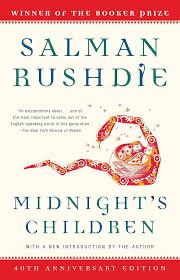
Salman Rushdie’s Midnight’s Children is not a monsoon novel in the traditional sense, but it is steeped in a different kind of storm—historical, emotional, and narrative. Winner of the Booker Prize and later the Booker of Bookers, this genre-defying masterpiece begins, quite fittingly, at the stroke of midnight on August 15, 1947, the moment India gains independence and with it, the birth of its narrator, Saleem Sinai. His life, and the lives of all the other “midnight’s children,” are bound to the fate of the nation.
Rain makes its appearance throughout the novel as a recurring motif, one that floods memories, blurs timelines, and heightens emotional crescendos. Whether it is the deluge that alters family fortunes or the moist heat of Bombay’s rainy days, the weather plays a symbolic and sensual role in Rushdie’s lush, maximalist prose. The monsoon becomes a metaphor for the tempest of change, fertile and destructive, cleansing and chaotic. Rushdie’s language mirrors the monsoon: extravagant, overwhelming, and relentless. His sentences cascade in torrents, filled with imagery, wordplay, and political undertones. Reading Midnight’s Children is like being caught in a literary cloudburst; you can either run for cover or surrender to the flood. And once you surrender, you discover the richness of postcolonial memory, myth, satire, and trauma, all braided together into one heady stream of consciousness.
The emotional climate of the novel also matches the monsoon’s rhythm. There are torrential moments of revelation and quieter spells of introspection. Saleem’s journey from childhood in a crumbling estate to his disintegration in a pickle factory is both absurd and poignant, and rain often marks transitions, both personal and historical.
This book demands attention. It challenges, delights, confounds, and ultimately rewards. For a monsoon reading list, Midnight’s Children stands as a literary tempest: it sweeps you into its pages and refuses to let you out dry. Best read during a prolonged thunderstorm, when time feels elastic and the outside world echoes the novel’s intensity.
Kafka on the Shore by Haruki Murakami

If rain is a portal to other worlds, then Haruki Murakami’s Kafka on the Shore is a monsoon of metaphysical wonder. This Japanese novel, surreal and spellbinding, is soaked in atmosphere and ambiguity, making it an ideal companion for stormy days when the boundary between real and imagined feels especially thin.
At its core, Kafka on the Shore is about two parallel journeys: that of Kafka Tamura, a 15-year-old runaway seeking escape from a sinister prophecy, and that of Nakata, an ageing, illiterate man with a strange connection to cats and the supernatural. Their stories weave between libraries, forests, metaphysical spaces, and dream logic, forming a narrative that resists traditional interpretation.
Rain is ever-present in the novel’s world, not just as weather, but as a signal. A signal that time is folding in on itself, that something inexplicable is near. Whether it’s leeches raining from the sky or the damp hush of a wooded path, Murakami uses the monsoon not just to build mood, but to unlock memory, blur identity, and deepen emotional resonance. The moist air carries secrets, the grey sky questions boundaries, and each drop feels like it’s tapping into the subconscious.
Murakami’s prose, lyrical, spacious, and strange, pairs perfectly with the rhythm of a rainy day. It moves slowly, purposefully, allowing the reader to drift, to question, to surrender. Like rain filling a quiet landscape, his writing seeps into unexpected places, revealing inner landscapes full of loneliness, longing, and wonder.
What makes Kafka on the Shore a quintessential monsoon read is its emotional weather. For readers who enjoy literary puzzles, spiritual mystery, and emotional depth, this novel offers the perfect storm. Let the rain fall, let the cat speak, let the soul wander. Murakami will show you the way.
Anna Karenina by Leo Tolstoy

Though set in imperial Russia, far from the tropical monsoons of the subcontinent, Leo Tolstoy’s Anna Karenina pulses with a stormy emotional intensity that makes it an apt companion for rain-drenched days. This is not a novel about rain, but it understands weather—the weather of the heart. Its sweeping narrative of passion, betrayal, guilt, and existential searching carries the same weight and rhythm as a long, heavy rain.
Tolstoy’s world is one of sharply drawn contrasts: the opulence of Petersburg, the moral disintegration of Moscow’s salons, and the philosophical quietude of the countryside. And at its centre stands Anna, a woman caught between societal expectations and personal desire. Her affair and her increasing estrangement from the rigid structures around her unfold with tragic inevitability, like clouds that refuse to lift.
Rain in Anna Karenina is not abundant, but it exists as a motif of transition. Storms gather as relationships fray; clouds hover when inner turmoil is unspoken. Tolstoy uses weather to mirror psychological states, often without overt declaration. His prose, precise and rich, allows the reader to feel the dampness of a grey day in Moscow or the cleansing calm of a rural breeze. There’s a literary elegance to how he captures atmosphere, suggesting, rather than stating.
What makes this book resonate with monsoon reading is its scope and its depth. Like the rain, the novel arrives in waves: sometimes a slow drizzle of introspection, sometimes a violent downpour of passion and consequence. It is the kind of book one returns to, much like the rain, again and again. And like the best storms, it leaves you changed. Let this Russian classic accompany your rainy season. Let its emotional gravity pull you in. And when the skies outside are heavy, let Anna’s inner storms echo your own.
Learning from Silence by Pico Iyer
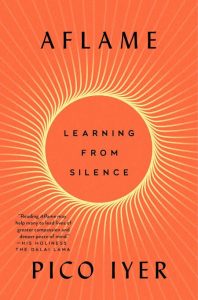
In a season that encourages stillness, there is no better guide than Pico Iyer. His recent book, Learning from Silence, is less about the rain that falls outside and more about the quiet it awakens within. It’s a monsoon read not because of thunder or drama, but because of the reflective, almost spiritual mood it inspires, one that aligns perfectly with long, rainy days spent looking inward.
In this meditative and deeply personal memoir, Iyer explores silence not just as absence, but as presence. Drawing on decades of travel, his relationships with monasteries and monks, and his own experiences of stillness in places as varied as Japan, California, and Bhutan, he makes a compelling case for the value of quiet in a world drowning in noise.
The book isn’t prescriptive. It doesn’t tell you to switch off your devices or meditate for hours. Instead, it gently invites you to listen to the hush beneath conversation, the pause between thoughts, the music of a rainy evening where words aren’t necessary. Learning from Silence is a perfect monsoon companion for those who wish to unplug and unwind. It asks you to let the weather outside sync with a slower inner rhythm. It’s about finding clarity in fog, presence in solitude, and wisdom in pause. The chapters feel like essays, but also like whispered journal entries—a kind of travel writing for the soul. Let it sit beside you while the rain falls. Let its silence become part of yours.
Derrida in JNU by Nigitha John
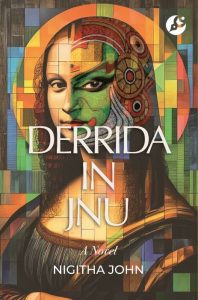
A monsoon read doesn’t always have to echo with nostalgia or introspection; sometimes, it can challenge the intellect, spark rebellion, and shimmer with surrealism. Derrida in JNU by Nigitha John is one such book. Set in the ever-politicised, ever-romantic corridors of Jawaharlal Nehru University, this dazzling philosophical novel is as much a love story as it is a bold experiment in form, theory, and language.
The story of Das and Diva is not a conventional romance. It is a love story that deconstructs itself as it builds, that pauses for theory, that speaks in half-sentences and footnotes, and that flirts in the language of Derrida and desire. The narrative fuses magical realism with postmodern techniques, creating an atmosphere of cerebral seduction.
And what better backdrop than the Indian monsoon? The rains, like language in this book, are slippery, seductive, and unpredictable. Trees speak. Buildings remember. Statues shift. The season here is charged not with sentiment, but with revolution, both political and poetic. The rhythm of the rain mirrors the rhythm of unrest.
What makes Derrida in JNU especially suited for a monsoon reading list is how it blends intellectual weight with emotional vulnerability. Nigitha John draws on her own academic roots, an M.Phil from JNU, a career steeped in literary theory, to craft a novel that feels both grounded and daring. Her prose is layered, multilingual, and often riddled with references, yet it never alienates. Even when it leaps into abstraction, it carries the reader, like a boat on a flooded campus road.
This is a novel that dares you to think differently about love, about language, about what novels can be. And in doing so, it mirrors what the monsoon does to the world: washes away the dust, rewrites the map, and leaves you drenched, changed, awake.
Published by Magic Moon, Derrida in JNU is one of the boldest and most talked-about fiction debuts of 2025. For those looking for a monsoon book that defies genre, stirs the intellect, and invites deep re-reading, this is your next must-have. You can place your order now—let the rain fall and the revolution begin on the page.
Each of these books captures some facet of the monsoon—be it mood, memory, mysticism, or metaphor. Whether you’re reading by a window with rain streaking the glass or curled up under a blanket with thunder rumbling in the distance, these reads will enhance the experience. In this season of slow time and suspended rhythms, let stories rain down on you.
